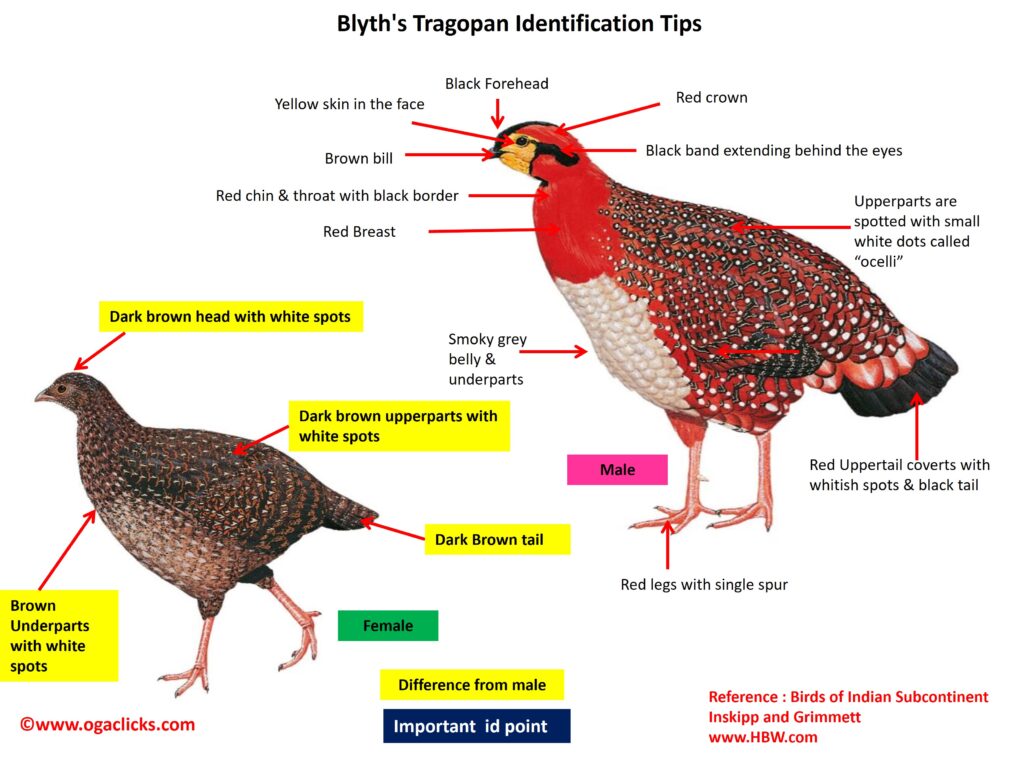
Blyth’s Tragopan Tragopan blythi
Etymology:
- Tragopan: Latin word for mythical, horned, purpleheaded bird
- Blythi : Named after English zoologist Edward Blyth (1810–1873)
Vernacular Name : Ass: Hurhuria, San sorai, Naga: Gnu, Aghah, Aogho, Kuki: Chingtho, Tibetan: Bop
Distribution : T. b. molesworthi – Resident of Arunachal Pradesh
Description : The size of male is 65–70 cm. wt of 1930 g; the size of female 58 cm , wt of 1000–1500 g. The male is only Tragopan with red breast and pale smoky grey belly; bare facial skin yellow . The female is darker than other Tragopan females, with a lanceolate buff marking on each feather of back, and also has yellow orbital skin The Irides and bill are brown, and legs are pinkish or reddish in male, but paler in female or non-breeding male. The first-year male is similar to adult female in general colour, but has red on neck and breast, black on head, and is larger and longer-legged than female. Juvenile is very similar to female.
Habitat: It is found in densely wooded valleys and hillsides with Rhododendron and thick herb understorey . It is found between 1800 m in winter and 3300 m in summer.
Food habits: It eats seeds, berries, fruits and buds. Most feeding apparently occurs during early morning and late afternoon, and it forages arboreally as well as on ground. Sometimes seen in small groups of 4–5 birds
Breeding habits: They breed in Apr to mid May The nest is placed in tree stump or bush. The nest is made of sticks, lined with twigs and grass. They lay a clutch of 2–5 eggs. The incubation period is 28–30 days